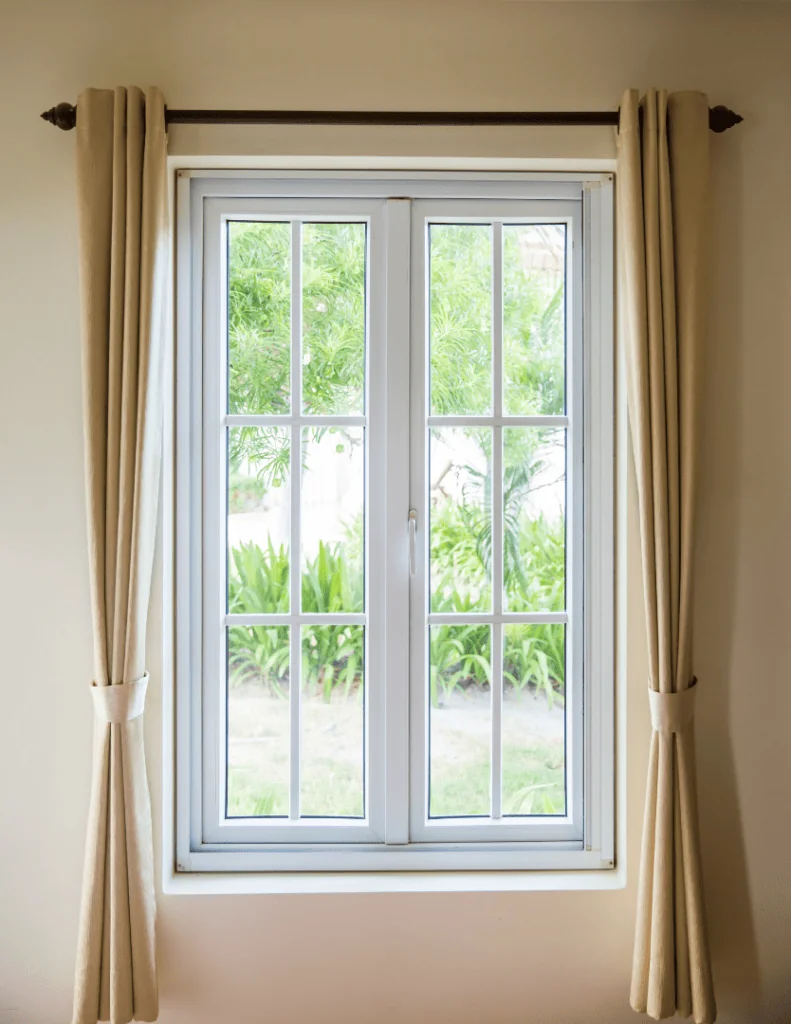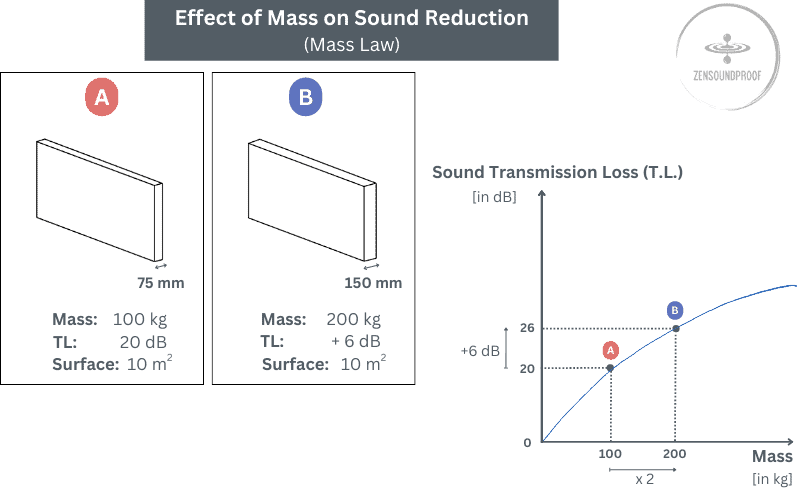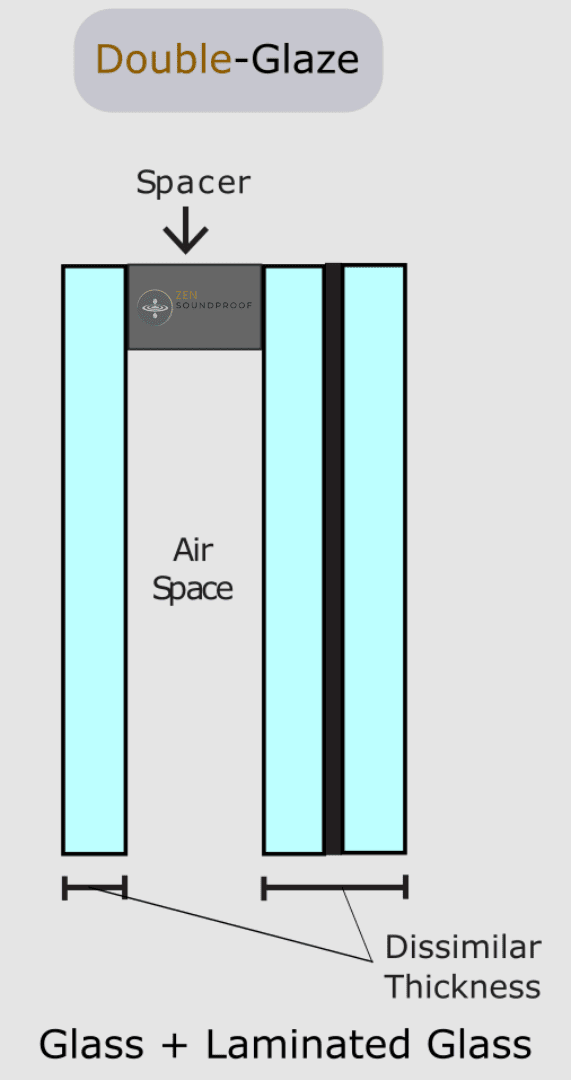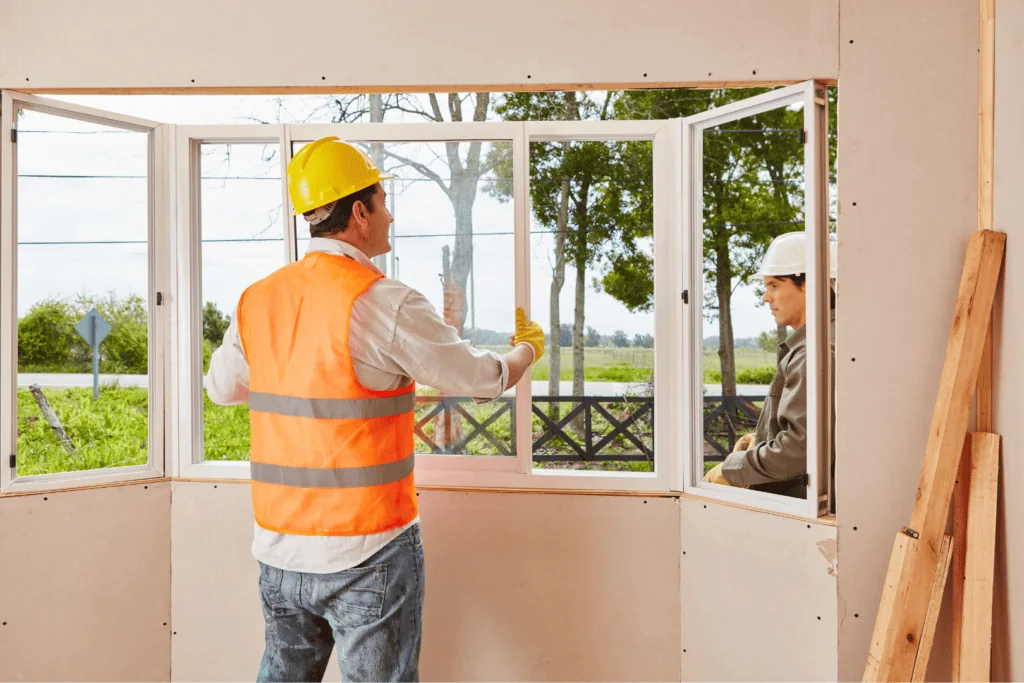I’ve spent the last few years working hard to make my home more enjoyable. A big project has been reducing noise pollution because I live in a fairly noisy area. While walls are easy to handle, I had to spend a bit more time finding the best soundproof windows for home use.
Luckily, I already knew quite a bit about soundproofing, so putting my knowledge to the test wasn’t too difficult.
But I decided it would be helpful to round this information up for others looking for the best windows for noise reduction. So, that’s what I discuss in this article.
What Are Soundproof Windows?
Soundproof windows are, simply put, windows that use extra materials to improve their sound-attenuating abilities. This could be a layer of resin, an air gap, acrylic, or something else. It also includes frames, which can be made thicker to reduce sound transmission.
They work by either dampening sound waves passing through the panes or combining layers of different materials. Doing this means there are different resonant frequencies, so different parts of the sound wave are blocked as it passes through the window.
Although this list isn’t exhaustive, some types of noise that soundproof windows can block include:
- Road traffic
- Noisy neighbors
- Construction noise
- Airplanes
- Trains
All of these are airborne sounds. While I won’t cover this in much detail here, the methods of dealing with airborne sounds are slightly different to those used on structure-borne noise. Luckily, we can apply these techniques to windows.
Why Soundproof Your Windows?
The answer to this question is probably quite obvious: you want to soundproof your windows to reduce noise pollution. But in turn, this can offer numerous benefits, including:

- Increased privacy – soundproofing stops sounds from leaving as well as coming in
- Improving sleep quality
- Increasing your home’s value – some buyers will pay good money for a quieter home
- Better security – while not always the case, many soundproof windows are harder to break through than normal windows
- Superior thermal insulation – better heat insulation is a side-effect of soundproof windows, as heat transfer follows many of the same principles as acoustic insulation
The bottom line is that soundproofing your windows carries a range of benefits. Taking on this project can be expensive, but it’s arguably worth it when you see the difference it makes.
How to Measure Window Soundproofing
The loudness of sounds is a subjective measurement. Our perception of how loud something is can depend on our hearing ability, tolerance for sound, environmental factors, and more.
As such, it’s necessary to have an objective measurement for soundproofing quality of products. Importantly, too, it means we can compare options when trying to make a decision on the best for our needs.
So, how do we measure soundproofing in windows? Well, we have 2 metrics: STC and OITC.
STC and OITC
Sound Transmission Class, STC, measures how much a material attenuates (blocks) sound waves, and we use it for construction materials. Materials are given an STC rating in a lab testing environment, where sound waves are measured at different frequencies on both sides of the material.
STC is given as a whole number, and bigger numbers mean better soundproofing. Anything over 40 is fine, but 50 and above is considered a good STC rating.

OITC stands for Indoor-Outdoor Transmission Class. It’s basically a subdivision of STC that focuses specifically on materials attenuating sound between an outdoor environment and an indoor space. As such, tests use lower frequencies to represent outside noise like traffic, trains, airplanes, etc.
It uses the same scale as STC, but you’ll usually find that OITC values are lower. This is because low-frequency sound waves can travel further and therefore penetrate more effectively.
Soundproofing Principles that Improve STC and OITC
There are 4 main soundproofing principles that summarize how materials can reduce sound transmission or improve sound quality. STC and OITC can be improved using 3 of them, as the 4th (absorption) focuses on acoustic treatment rather than soundproofing.
The 3 we’ll use to discuss noise reduction windows are:
1. Mass
Put simply, sound waves make things vibrate, whether this is air or a solid material. As such, increasing mass means said material is more difficult to vibrate. In our context, this means heavier glass panes will block sound more than lighter glass.

Some examples of increasing the mass of a window are:
- Thicker panes of glass
- Multiple panes – double- or triple-glazing, window inserts
- Denser frame materials – Wood or vinyl rather than PVC
2. Damping
Damping is an interesting soundproofing principle. It involves adding an extra rigid layer between 2 primary layers. The purpose is to basically add a shock absorber to the structure.
Sound damping in windows typically means using laminated glass, which is 2 glass panes with a layer of resin in between. We can refer to this as an acoustic interlayer, and it absorbs and dissipates sound waves.
3. Decoupling
Decoupling is also called mechanical isolation. In short, it involves breaking the physical connection between elements of a structure. Doing so prevents sound waves and vibrational energy from transmitting, as there’s no physical path to follow.
Some examples of mechanical decoupling I often mention are resilient channels, or floor mats.
The best example of a decoupled window is double glazing. Sound waves won’t transmit from one pane of glass to the other because of the air gap in between. Importantly, each pane has resilient mounts holding them into the frame, which makes sound vibration harder to travel from the pane to the frame.
What Makes a Window Soundproof?
Now that we’ve got a good background of soundproof measurements and principles, let’s apply it to windows. We can break this information down into 6 main areas when it comes to soundproofing windows, which are:
Glass Thickness
As mentioned above, glass thickness involves the principle of mass. We can use something called Berger’s law here, which states that every doubling of mass will increase sound insulation by 6 dB.
It is possible to double the mass of a window by adding an extra pane, but it’s more practical to look at different glass thicknesses and their STC and OITC ratings. Here’s a chart to give some examples, taken from General Glass.
| Glass Type | Glass Thickness | STC | OITC |
|---|---|---|---|
| Monolithic (single pane) | 1/4″ (6.4mm) | 31 | 29 |
| Monolithic (single pane) | 1/2″ (12.8mm) | 36 | 33 |
| Laminate (with PVB) | 1/4″ (6.4mm) | 35 | 31 |
| Laminate (with PVB) | 1/2″ (12.8mm) | 38 | 34 |
As you can see, doubling the thickness of single pane windows (monolithic) improves the STC rating by 5 and its OITC by 4.
Glass Type
There are 3 types of glass we might find for normal domestic windows. These are:
- Float glass – normal glass panes
- Tempered glass – no effect on soundproofing
- Laminate – a decent option for soundproofing
Laminate is also called acoustic glass, and it provides some damping properties. This is because of the PVB (resin) layer in the middle. The table above shows that a sheet of laminated glass the same thickness as a single pane has a higher STC and OITC value.
Number of Panes
This is a bit of a no-brainer, but adding more panes of glass to your window increases its mass and improves sound blocking. Within this option, we have single, double, and triple.

It might surprise you, but triple pane windows aren’t actually better than double pane windows. I explain why in more detail in my article on triple-glazed windows. This is because of something called the triple-leaf effect. The window construction can basically reach critical mass, where adding more glass doesn’t make things better.
| Glass Type | Glass Thickness | STC | OITC |
|---|---|---|---|
| Monolithic (single pane) | ¼” (6.4mm) | 31 | 29 |
| Dual Pane Windows (1/2” air gap) | ¼” – ¼” (6.4mm each) | 35 | 30 |
| Dual Pane Laminated (1/2” air gap) | ¼” – ¼” (6.4mm each, including PVB layer) | 39 | 31 |
As you can see from this table, the best setup is a double-glazed window made with laminated glass. This takes advantage of damping and decoupling, which I explain in more detail below.
Air Gap
The air gap between 2 panes of glass is vital for reducing sound transmission. Air is a poor conductor of sound, and it adds a medium with a different resonant frequency. A bigger air gap is better, as it provides more decoupling space.
| Glass Type | Total Thickness (in inches) | Air gap (in inches) | STC | OITC |
|---|---|---|---|---|
| Dual-pane Glass | 1 overall | 1/2 | 35 | 30 |
| 1-1/4 overall | 3/4 | 38 | 33 |
Although this isn’t a super detailed table, it shows how even an extra quarter-inch air gap can make a difference. As you can see, a 3/4″ air gap improves the STC rating by 3 points.
Sealing Quality
You want seals to be as tight as possible to remove the transmission path for sound waves. You can do this by using acoustic caulk, adding weatherstripping, or completely sealing gaps.
Acoustic caulk is generally of use in gaps between the window frames and the wall.
On the other hand, weatherstripping’s purpose is to leave no air gaps when your window is closed. You’ll want to apply weatherstripping onto the surface where the mobile surface meets the fixed surface (the edge of the window fits into the frame).
It’s important to understand how different types of windows open and fit into their frames. For example, casement windows, hung windows, sliding windows and awnings all open differently. Understanding how the windows fit into their frames is necessary to know how to seal them.
Window Frame
The material used to build the window frame can have an impact on the overall soundproofing performance. For example, aluminum frames can transmit sounds more easily than, say, wood or vinyl.
Unless you’re installing completely new windows, I wouldn’t recommend paying too much attention to the frame material. Even the more rigid materials are far sturdier than the window itself, so they’re never really the weakest element.
Plus, double-glazed windows have glazing putty holding the panes into the frame. This adds an extra level of decoupling, meaning you don’t really have to worry about the frames all that much. Instead, I recommend you focus on making sure they’re properly sealed.
How to Choose the Best Soundproof Windows
To put this into practice, how do you choose the best soundproof windows? While your specific needs will differ, the following is a general guide for the research and decision-making process.
1. Figure Out What You Need
An obvious place to start is to figure out what you need. To do this, it helps to know the noise level you’re dealing with and your desired level of sound reduction. If you’re serious about this, buy a decibel meter. You can also get an app on your phone, but this may not be as accurate.
From there, you’ll need to figure out your desired noise reduction, ideally in an STC value. Although 40 is achievable, I suggest being a bit more practical and aiming for 35-39. This is a good compromise between noise reduction, cost, and amount of effort needed.
2. Choose Your Type of Glass
Next, figure out what’ll be the best type of glass for your project. This involves balancing STC ratings, availability, and budget. For example, acoustic glass will have the highest STC rating but can be very expensive and challenging to source. On the other hand, double glazing is readily available.
There’s not much more I can say here, other than do plenty of research, using this article as a starting point. Also, check out my article on soundproof glass, as that has some useful information in it.
3. Compare Manufacturers
Once you dive into the soundproof window market, you’ll find there are some less than transparent brands (no pun intended!). It’s pretty useless for a company to say it sells high-quality acoustic glass if it doesn’t give you any metrics.

Reputable manufacturers will state their product’s STC rating. For example, Soundproof Windows is fairly clear about the products it sells and how they work. There are loads of brands out there, so be prepared to do some research.
Along with checking STC ratings, I advise you to look at customer reviews and product warranties. As with any other purchase, this is vital information. For example, I always think it’s better to spend more on a product with a better warranty than a cheap one that could break in a few years.
Can You Soundproof an Existing Window?
Buying soundproof windows is generally the most effective option for reducing sound transmission. However, that’s not always practical. Instead, you can try improving your existing windows using window treatments. I’ve written a full article on how to soundproof an existing window, but the highlights include:
- Weatherstripping. This helps seal any gaps that weaken the overall soundproofing of a window. Weatherstripping is easy to use and widely available online, making it a cost-effective solution.
- Acoustic caulk. This is another product designed for sealing gaps, except this time it’s between the frame and wall. Buy acoustic caulk rather than normal silicon caulk, as it stays more flexible and adds damping properties.
- Window insert. Installing window inserts basically involves adding an extra window pane, usually made from acrylic. I’ve written a guide on DIY window inserts that explains how they work, so check that out.
- Window plug. A window plug is the next step up. It uses soundproofing materials like mass loaded vinyl and foam to block noise at the expense of visibility. But if you want high-level soundproofing, this is the option. Check out my article to know how to build one.
FAQs on Best Windows for Soundproofing
What is the average cost of soundproof windows?
Soundproof windows can vary massively in price depending on materials, size, installation and more. Expect to pay around $1,500 on average for a normal-sized soundproof window. However, this could jump up to $2,000 or more quite easily for larger windows.
Are soundproof windows worth it?
Soundproof windows are worth the cost if you’re renovating your home anyway, especially if you’re replacing single-glazed windows. However, the STC and sound control improvement over modern double-glazed windows doesn’t really justify the several thousand dollars they cost.
In this instance, I’d recommend one of the options I’ve listed above. For example, adding a window plug to your existing double-glazed window can improve its STC value by around 3 points. If you refer back to the tables above, you’ll remember that the difference between a double-glazed window and a laminated version is 4 STC points. In short, a window plug can add almost the same improvement for a lot less money.
Are any windows soundproof?
There’s no such thing as a completely soundproof window. The noise-reduction properties of windows are restricted by their primary purposes: visibility and ventilation. Glass isn’t a good material for sound insulation, at least compared to materials used for building walls.
But if we look at it in objective terms, it’s basically impossible to make a window completely soundproof. An STC value of 60 and above is considered “soundproof”, and we can only really achieve 45 with an acoustic window setup. As you can see, there’s a considerable difference between these values.
Final Thoughts
Soundproof windows can absolutely be worth the investment if you’re making changes to outdated materials in your home. The data above shows that acoustic glass can be a massive improvement over single-glazed windows.
However, I hope this article has also highlighted the limitations of soundproof windows. It’s not always super practical to spend thousands to replace double-glazing with acoustic glass, as the STC value improvement won’t always be worth it.
Have you experimented with soundproof windows? Alternatively, do you have any practical options that are less expensive than replacing a set of windows? Let me know in the comments below.
